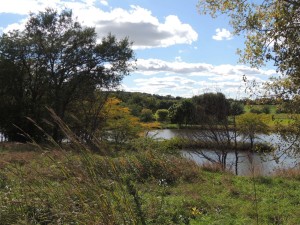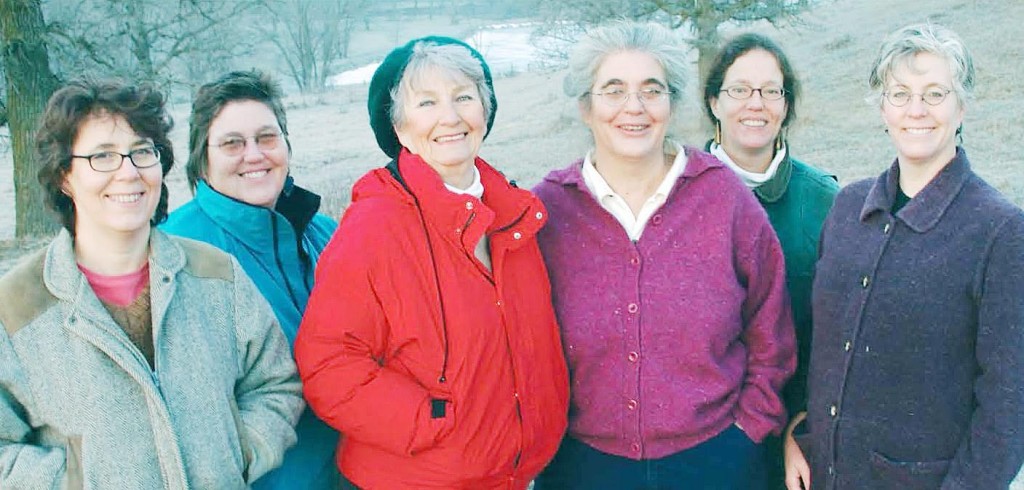
~by Barbra Jotzke-Torrier for Whiterock Conservancy
Upon her death Mary Garst of Coon Rapids, the widow of Stephen Garst, gave the people of Iowa a tremendous gift of protected land that will benefit generations. A total of 1,200 acres of natural lands, farming lands, and recreational lands, valued at $7 million, has been donated to the non-profit Whiterock Conservancy to steward on behalf of all Iowans.
This bequest, the most recent Garst family donation to Whiterock Conservancy of a planned total gift of more than 5,000 acres, is one of the largest cumulative land gifts in Iowa history. With this gift, Mary Garst and her daughters Liz Garst of Coon Rapids, Sarah Garst of West Des Moines, Kate and Rachel Garst of Des Moines and Jennifer Garst of Ames have donated 3,365 acres since their initial land gift to form Whiterock Conservancy in December 2004.
“The people of Iowa have truly been gifted some of the best rural land Iowa has to offer in these farms” said Conrad Kramer, executive director of Whiterock Conservancy. He continued, “Whiterock is honored to be able to accept this land, and the responsibility that comes with this gift to continue to care for, study and restore these outstanding resources and provide the public the opportunity to experience their majesty.”
According to Liz Garst, “My siblings Ed, Sarah, Rachel, Kate and Jen and I were taught to love this beautiful land by our parents Stephen and Mary. This gift to Whiterock and Iowa is a testament to their values of generosity, stewardship and service.”
This bequest of natural lands is especially meaningful in Iowa, the most ecologically altered state in the nation, where relatively little land is permanently protected and which has less public land open for recreation than nearly every other station in the nation. In addition, the crop and pasture ground will expand Whiterock Conservancy’s ability to demonstrate sustainable agriculture practices to address the importance of soil health and water quality while remaining profitable.
This bequest is composed of a mix of agricultural and natural lands broken into four farms; one farm is adjacent to Whiterock’s current facilities containing a spectacular reconstructed prairie, two farms have a mix of productive farm ground and restored oak savanna adjacent to a state wildlife management area, and one farm is adjacent to a state managed wetland.
Whiterock is excited to be able to add the 272 acre Speiker Farm to conserved grounds as it makes Whiterock’s contiguous lands even larger, and size is one of the most important attributes that makes Whiterock’s wild landscape robust.
The farm has one of the best, most diverse constructed prairies at Whiterock. The farm straddles the divide between the Middle Raccoon and the Brushy Creek watersheds, providing educational opportunities and wonderful views. The farm also gives Whiterock a new road access and a significant new neighbor, the lovely and historic Orange Township Cemetery, where many of the earlier settlers of the neighborhood are buried.
Located a few miles south of Whiterock Conservancy’s main landmass, the Pingrey and 292 Farms form a large parcel in their own right at 740 acres. These farms are two of the most beautiful farms in the territory, with productive bottom lands and highly restorable oak savanna uplands as well as a quarter mile of the South Raccoon River. The property features two popular bass fishing ponds, and with the adjacent Elk Grove Wildlife Management Area, this property provides an anchor for the Oak Savanna Bird Conservation Area.
The 320 acre Terrill Farm, legendary for its pheasant hunting, contains grassland habitats, a large wetland, pasture, crop ground and interesting geologic features. This farm expands the tallgrass prairie and wetland habitats of the adjacent publicly owned Dunbar Slough, managed by the Iowa Department of Natural Resources, creating a core conservation area that is an amazing flyway for migratory birds. Each spring and fall, the visitors to the Terrill Farm will be able to see spectacular waterfowl migrations. This farm is within the Southern Prairie Pothole Region, which is being considered for National Wildlife Refuge status.
All these farms will continue to be subject to property taxes under Whiterock Conservancy’s ownership. These working lands maintain net farm income through a combination of row crop, CRP, pasture, hunting, and hay sufficient to pay those taxes and take care of basic maintenance. However, the task of continuing to restore these habitats and opening them to the public will take public support.
In 2015 Whiterock Conservancy constructed an improved trail system, new campground facilities, and other attractions. In the process, Whiterock Conservancy became something never seen before in Iowa: a nonprofit organization that demonstrates economic and environmental land management of working lands, interwoven with recreational opportunities and overnight accommodations.
Whiterock Conservancy is the third largest recreation area in the state, but receives no operating tax support. Whiterock Conservancy is counting on the annual donations of Iowans to allow the Garst Family’s generous donations of land to be fully utilized for research and demonstration of sustainable ag practices, public recreation and ecological restoration.
The public will be invited to a dedication celebration to be held in the spring.
In late 2004, the Garst family began a planned donation of land near the Coon Rapids community. Now more than 5,000 acres has been donated to form Whiterock Conservancy. With the death of Mary Garst, 1,200 acres were added.
This photo was originally published in 2004 when the initial donation was announced, from the left: Rachel Garst, Sarah Garst, Mary Garst, Liz Garst, Jennifer Garst and Kate Garst.
